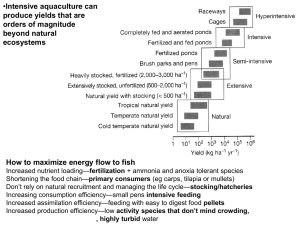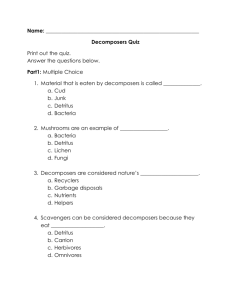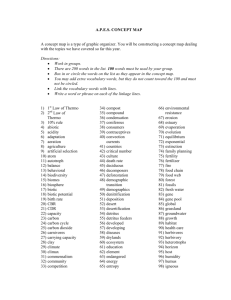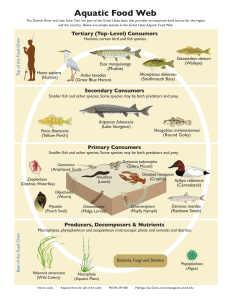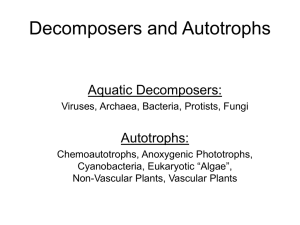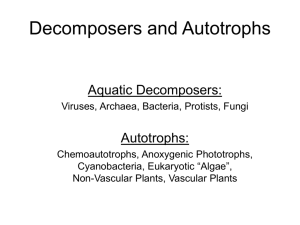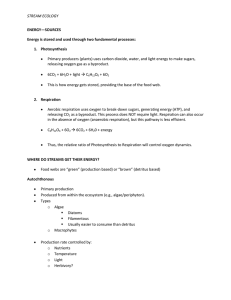zonation •different zones in the lake had different types of plants...
advertisement
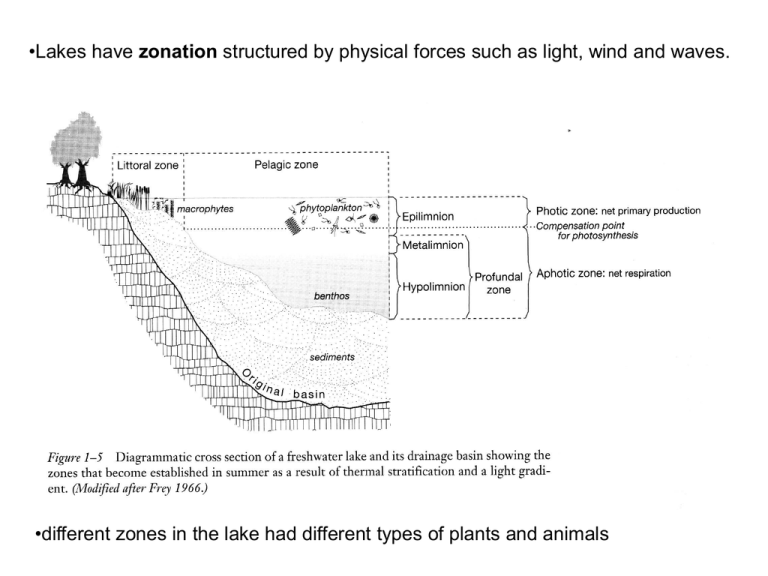
•Lakes have zonation structured by physical forces such as light, wind and waves. •different zones in the lake had different types of plants and animals •Zones in a river system are less distinct •But they are functionally very important The River Continuum Concept Physical forces change gradually along a river •Elevation ↓ •Slope ↓ •Temperature and nutrients ↑ •Drainage area and discharge ↑ •Width of channel and floodplain ↑ •Mean velocity ↑ •Mean depth ↑ •Turbidity ↑ •Sediments, erosional, alluvial, to depositional •Shading ↓ •Periphyton, macrophytes ↑, then ↓ •Phytoplankton and zooplankton ↑ •Coarse detritus input highest upstream •Fine detritus accumulates downstream •Benthic invertebrate community changes shredders, grazers, collectors •Fish community changes •Cold water to warm water species http://www.d.umn.edu/~seawww/depth/rivers/art/figure1_4.jpg Allochthonous input—Detritus processing •Dead plant biomass breaks down slowly and their nutrients can remain tied up in as organic detritus for long periods of time •Primary production in many ecosystems depends more on its recycling rate ie mainly decomposition of plant detritus, than on loading rates •Aquatic plants break down more rapidly than terrestrial plants, and woody plants are very slow to decompose because they contain lignin, which most bacteria and fungi can’t digest. Leaf processing •Wetting and breadown of cuticle •Leaching of soluble components (DOM) •Colonization by bacteria and fungi •Increase in protein content •Colonization by invertebrates •Enhances microbial action •Breakdown into small fragments Invertebrate detritiivores find leaves much more to their liking after they have been colonized by bacteria and fungi Detritus processing in a stream Shredders enhance microbial action (bacteria & fungi) •convert CPOM to FPOM •Food for microdetritivores Processing of FPOM by microdetritivores Shredders-macrodetritivores collectors-microdetritivores Filter-feeders, deposit-feeders Litter bag experiments have been used to study decomposition of detritus •Nutrient content of the detritus, especially N greatly increases decomposition rate, •as does increased temperature •and mesh size 100 % Weight remaining % Larger invertebrates get into the litter bags if the mesh is coarse 0.5 mm mesh 2 mm mesh 10 20 days 30 The interplay between the autochothonous and the allochtonous food chain Allochthonous input Autochthonous input •Mountain and prairie headwater streams are unshaded •Therefore less detritus dominated than eastern deciduous streams which start at lower altitude •Their seasonal range of discharges also tends to be higher than most eastern streams. http://www.btwatershed.org/Newsletter/2002Newsletter/Fall2002/nabs%20river%20continuum%20concept20%25.jpg The River Discontinuum: Dams and wiers Stream Fragmentation, A wier blocking fish movement a hanging culvert can block fish movement http://www.cee.mtu.edu/~dwatkins/images/aqua3pics/hatchery-weir.jpg http://www.nzfreshwater.org/thumbnails/culvert.jpg Dams/Reservoirs interrupt the river continuum
